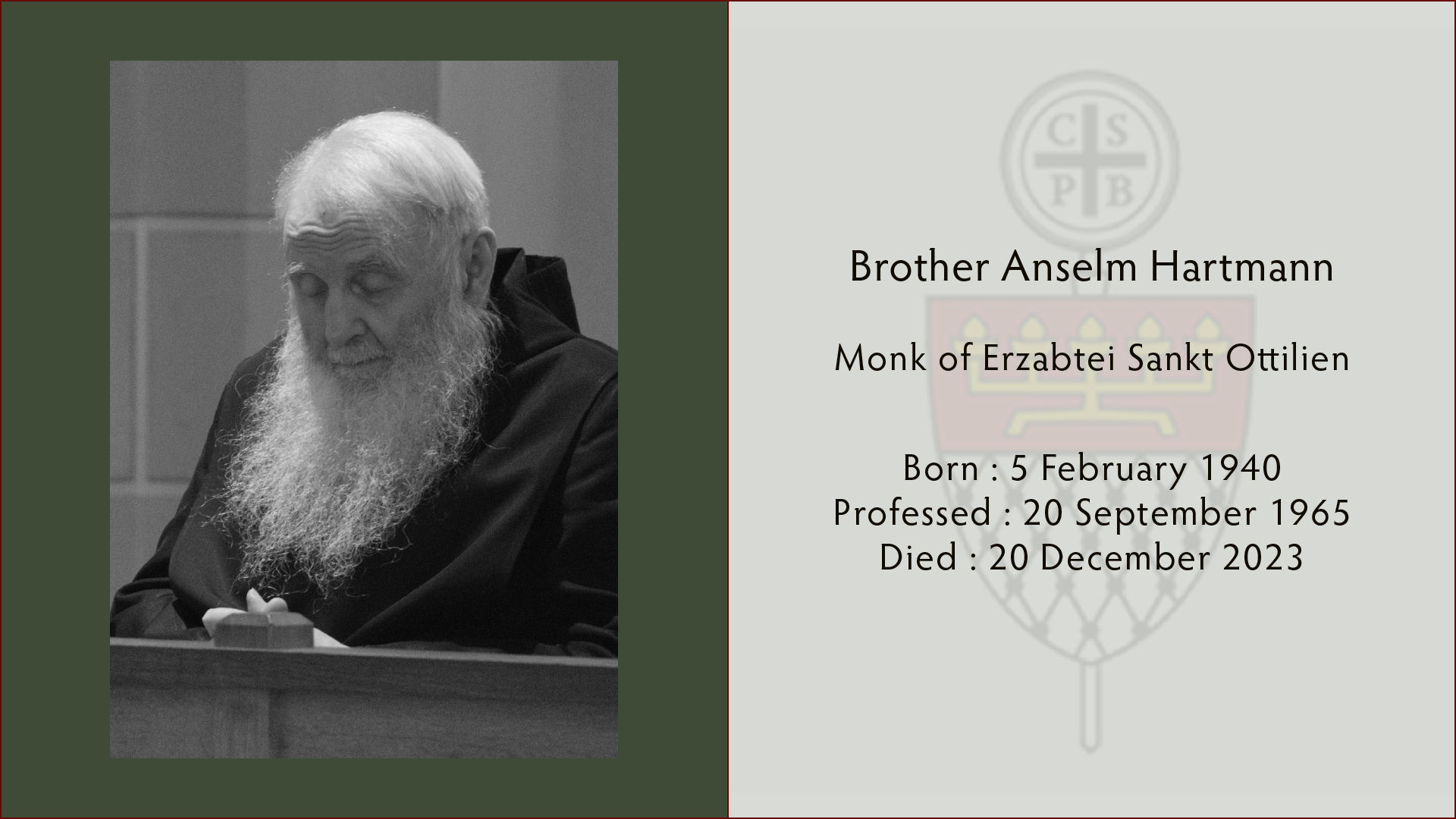Photo courtesy of Erzabtei Sankt Ottilien
Brother Anselm (Franz Xaver) Hartmann OSB
Missionary Benedictine of Sankt Ottilien
5 February 1940 – 20 December 2023
Brother Anselm Hartmann died in a Munich hospital on the evening of December 20 following a sharp decline in his health. He had prepared well for this departure in recent years thanks to an intense life of prayer. He had been professed for 58 years. He also still had the pleasure of helping to set up an exhibition of nativity scenes in the monastery shop that was assembled from his collection of nativity scenes.
Our confrere was born on 5 February 1940 in the small village of Gabelbach near Zusmarshausen in the Diocese of Augsburg. A twin sister died shortly after birth. His parents, Johann and Mechthild Hartmann, née Baumeister, who were gifted with three other children, ran a farm. However, his mother died in April 1944 at the age of 34 and his father was killed in action in the war shortly afterwards. The orphaned boy therefore grew up as a foster child of the postal inspector Michael Specker in Sonthofen. He also attended elementary school there from 1947 to 1950. He then transferred to Oberstdorf secondary school which he left in 1956 without graduating.His school reports characterized him as quiet and hard-working. He then began training as a commercial clerk, but he did not complete it. His references describe him as reliable and conscientious.
He entered St. Ottilien in the autumn of 1963. His local parish priest recommended him as a committed believer who aspired “with joy” to a vocation as a religious.In his application for admission, Franz Hartmann says that he thought for a long time about this step until he came to the decision to devote all his energies to “building the Kingdom of God on earth.” He began his novitiate in September 1964, receiving the name of the great Benedictine Saint Anselm of Canterbury. First profession followed on 20 September 1965, solemn profession on 29 September 1968. Soon after his entrance into the monastery, the cellarer, Fr. Albrecht Wagner (1909–1987), assigned him to the monastery administration where he would work for a good forty years. Brother Anselm implemented all the technical developments that rapidly occurred during this period. He began his work with a mechanical accounting machine, then switched to an electric machine, followed by a computer accounting program he wrote himself. Brother Anselm was responsible for accounts dealing with gifts and his longtime colleague Brother Tobias Moos (1938–2023) for financial accounting. What remains impressive is how these two men in particular managed a huge accounting workload over decades. Besides his work at St. Ottilien, Brother Anselm helped with the bookkeeping at the neighboring convent of St. Alban for over a good 20 years. In 1998 he joined the financial accounting department and at the same time was already training his successor.
After a good forty years of administrative work, Brother Anselm switched to caring for the large monastery sacristy at St. Ottilien, which also included four secondary sacristies. The liturgies, some of which take place at the same time, require a considerable amount of time and strong nerves on the part of the sacristan; this was asking something from the occasionally irritable and impatient confrere. During this time, he also grew his characteristic white beard, which remains a vivid memory for many visitors. When the work became increasingly burdensome, he handed over the sacristy to a successor in 2010. However, he remained sacristan of the Ottilien Chapel for several years. Of his other monastic activities, his willingness to help by substituting at the reception or in the guest wing deserves to be mentioned.
Brother Anselm’s great passion was the collection of nativity scenes, combined with exhibitions at Christmas time. It began with a small nativity scene exhibition in 1982. This was then held on a larger scale for the first time in 1984 on the occasion of the centenary celebrations of St. Ottilien. From the beginning, the nativity scenes were collected from a missionary point of view, i.e. with a focus on nativity scenes from the young churches. In addition to purchases, donations in particular have significantly increased the collection, so that today around 300 cribs are in storage. Thanks to eager employees, the annual nativity scene exhibitions can continue, and the collection was even inventoried under Brother Anselm’s direction.
After moving to the monastery’s infirmary due to illness, Brother Anselm took over the sacristy there and could often be found praying quietly in the monastery church during the day. We wish for our confrere that he can now meet face to face with the Son of God, whose incarnation at Christmas he so revered!


